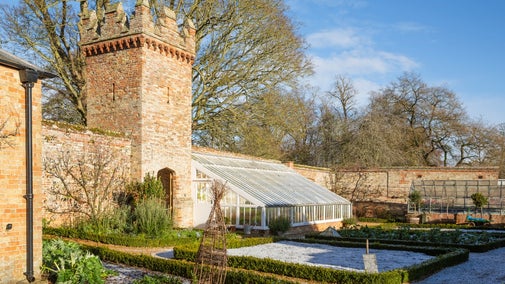
Donate
Everyone needs nature, now more than ever. Donate today and you could help people and nature to thrive at the places we care for.

Thanks to funding from Natural England, Historic England and the generosity of National Trust members and supporters, we’ve been able to embark on an exciting 10-year parkland restoration project. Discover how we're restoring part of the Grade II-listed landscape at Oxburgh to a species rich, native wood pasture that will attract more wildlife and increase biodiversity.
The historic estate at Oxburgh once stretched over nearly 3,000 acres including arable farmland, villages and over 400 acres of parkland habitat. By the time Oxburgh Estate was saved from demolition in 1951 and given to the National Trust, much of its vast estate had been sold off.
But in 2017 we were able to acquire 125 acres and today we’re working to restore 175 acres of the original 400 acres of historic parkland habitat.
The land, which was used for arable farming for over 70 years, was left fallow while we conducted research. Using an Ordnance Survey map from 1904, the team has been able to research how the landscape looked when it was at its peak.
Fortunately, we have the 1951 sales details for the trees sold at auction (to be cut for timber) and we’re using this to identify the individual locations and suitable species of trees to replant.
Wood pasture and parkland is a rare and threatened habitat. It’s been in decline since the 1950s due to the repurposing of land to help feed the nation after the Second World War.
Although we’re moving to a type of farming that's more aligned with creating woodland pasture, we’ve received incredible support from neighbouring farms, the former landowners, tenant graziers and our partners to restore this rare and vital landscape.
– Russell Clement, General Manager at Oxburgh Estate
We’ve started the first phase of the project to restore this landscape. During 2021 and 2022, we’ve planted 227 specimen trees, including oak, white willow and the rare black poplar. This will help to recreate the look of the original parkland and will grow alongside the 10 ancient trees that remain in the landscape.
We will also be recreating ponds and planting areas of scrub and lowland meadows to create a resilient habitat that will endure for centuries to come.
We’ll be opening up access so that visitors can explore the wider estate. Look out for new pathways when you visit and speak to our friendly Welcome Team who will be happy to let you know where you can explore.

Everyone needs nature, now more than ever. Donate today and you could help people and nature to thrive at the places we care for.

Natural England is the government’s adviser for the natural environment in England. They help to protect and restore our natural world.

The public body that looks after England's historic environment.
Find out more about the £6 million project at Oxburgh Estate, which included repairs to the roof, windows, chimneys and medieval gatehouse façade, securing Oxburgh’s future and the collection within.
Oxburgh Estate was built as a family home, and the Bedingfelds have now lived here since 1482, surviving Civil War, periods of near dereliction, and the threat of demolition.

Oxburgh has been home to the Bedingfelds for more than 500 years, and they still live within private apartments at Oxburgh today. Discover what you might see on your visit.

Wander around the Kitchen Garden and discover what’s growing this season as well as what's in bloom in the newly restored Peach House Border. Enjoy the tranquillity of The Orchard and the Herbaceous Border overlooking the Hall or venture further afield to explore the less formal areas of The Wilderness and My Lady’s Wood.

Oxburgh Estate is nestled on the edge of the Norfolk Brecks, where the land meets the wide-open Fenlands. Discover the wider parkland, and the wildlife that makes their home here.

We believe that nature, beauty and history are for everyone. That’s why we’re supporting wildlife, protecting historic sites and more. Find out about our work.

Find out more about the funding the National Trust receives from grants, and the projects it has helped support.
